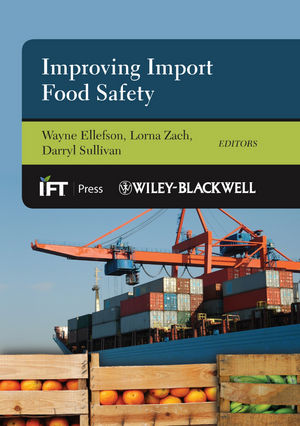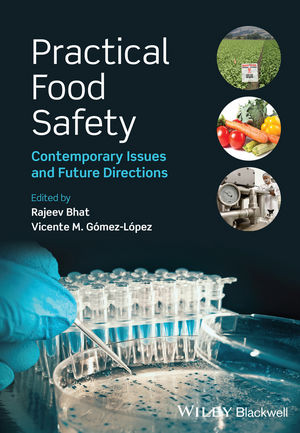Why Don't We Learn More from Our Mistakes?

One of the signs of insanity is doing the same thing over and over and expecting a different result. While it is a somewhat obvious statement, when we apply that thought to food safety, we don’t always see things straight, and we seem to keep our head in the sand.
Historically, the major improvements to food safety across the industry and through regulatory change have been driven by food safety crises. While a cold statement, it seems that we literally have to kill people with food before change happens.
Recognizing that one size does not fit all, it is very clear that many leading companies do learn from their mistakes and from others’ mistakes; we can explore why that is later. However, literally dozens of other food companies have the attitude of “it won’t happen to me”—but then it does, and consumers get sick, hospitalized and sometimes die.
A Look Back
1992–93: Ground Beef
If we look at recent history going back to the mid-’90s and ask what types of things led to significant change with regard to food safety practices, it is sad to say that major events triggered change. Let’s begin with Escherichia coli O157:H7 in 1992–93 from Jack in the Box. We knew almost 10 years earlier that this pathogen was linked to serious foodborne illness that could result in kidney failure, prolonged hospitalization and death. We also knew that E. coli O157:H7 was linked to ground beef and cattle as a source. We also knew that this was not a superbug and that proper cooking would kill it. Yet sadly, this outbreak occurred, resulting in the deaths of children and kidney failure in many.
As a result, there was massive change in the U.S. Then-President Bill Clinton funded the Food Safety Initiative, which put some really important tools in place. Among other things, it provided the funding for FoodNet and PulseNet. FoodNet provides us with an excellent score card in terms of how we are doing in the U.S. with regard to the leading causes of foodborne illness. This program began in 1996 and continues today; while we had some initial encouraging data as infections with E. coli O157 and Listeria monocytogenes fell, more recently, the trends have gone rather flat and we are not seeing many gains of late with regard to these two pathogens. When it comes to Salmonella, the number of cases has not dropped since 1996; thus controlling Salmonella remains one of our major challenges.
PulseNet is a great molecular epidemiology tool. It is a national database of state genetic maps of certain foodborne bacteria. This tool has allowed public health professionals to link small numbers of cases early, look for a common cause and hopefully find it, have implicated food removed from the marketplace and warn consumers. However, the technology currently used for PulseNet is old, and the U.S. Centers for Disease Control and Prevention is actively looking at the next generation of genetics tools that will likely involve some variation of whole-genome sequencing.
Another major change that the Jack in the Box outbreak produced was to drive fast foodservice restaurants to change their practices. As noted above, we knew that heat will destroy E. coli. So the obvious fix was to properly cook the food—in this case, ground beef. The fast food world made huge public health strides by putting systems in restaurants that would ensure proper cooking of ground beef. This outbreak also drove big regulatory changes with the U.S. Department of Agriculture (USDA) Food Safety and Inspection Service and effectively drove USDA to require mandatory Hazard Analysis and Critical Control Points for meat and poultry. Again, a big move in a positive direction for public health. But the sad part here is that it took a major outbreak and children to die to drive this change.
2006: Spinach
The next major example of how disaster drove change is the 2006 E. coli O157:H7 outbreak linked to spinach. This was another multistate outbreak that resulted in numerous illnesses, episodes of kidney failure and unfortunately some deaths. This outbreak resulted in the produce industry requesting that the U.S. Food and Drug Administration (FDA) develop regulations for produce. This was 8 years ago and we are still not there yet. The Food Safety Modernization Act (FSMA) that was signed into law in January 2011 gave FDA the authority to develop regulations for fresh produce. Currently, there is a proposed rule for fresh produce and the anticipated date of a final rule is late summer/early fall of 2015 with a 12-month period before the rule will be enforced. So this will take 10 years from the original outbreak that in my opinion was a major driver to the produce rule in FSMA.
Thus, the regulatory process for improving the safety of produce has taken a long time, but this same outbreak drove major changes in the food industry with the development of the Leafy Greens Marketing Agreement (LGMA). The LGMA was an industry-driven process that essentially pushed growers of fresh produce in California to adopt Good Agricultural Practices. I really believe this has helped improve the safety of leafy greens and, at least in California, may have as much impact as any rules FDA will issue.
2007: Pet Food
The third situation that drove change worth mentioning is the episode in 2007 when pet food was contaminated with melamine and cyanuric acid. It is my belief that this event had a major impact on U.S. food regulatory strategy. It was early in 2007 that FDA became aware that pet cats and dogs were dying from kidney failure at a high rate. As the investigation unfolded, it turned out that the company producing the pet food that these animals were eating had changed its supplier of wheat gluten. The quality of wheat gluten, and thus the price of it, is determined by the protein content, and the typical way that protein content is determined is by measuring total nitrogen.
The company in China making the wheat gluten had learned that by adding melamine, a chemical high in nitrogen, to the wheat gluten, they could create the appearance that the wheat gluten was actually of higher quality than it really was. The next part of this saga is that the company adding the melamine began to use impure melamine contaminated with a melamine byproduct known as cyanuric acid. As the story unfolded, we learned that melamine alone is not particularly toxic to cats and dogs, but the combination of melamine and cyanuric acid, even in low amounts, is toxic. The two chemicals form crystals in the animals’ kidneys, which results in kidney failure and death.
This episode with melamine caused concern to FDA and the administration at the time for three main reasons. First, it was an imported product; second, it was from China; and third, it was deliberate. This combination drove FDA to focus much more on how to control the safety of food imported into the United States and how to develop preventive strategies. This event was the catalyst that led to the elevation of foods at FDA to the commissioner’s office for the first time. There was no one with “commissioner” in his or her title who had any responsibility for food, and in 2007, the position of assistant commissioner of food protection was created, which later became the associate commissioner for food, with the mandate to create a food protection plan. This plan was the blueprint for FSMA, with three main concepts. The first was to develop robust preventive control systems. The second was to have targeted, risk-based inspections. The third was to ensure rapid response. The melamine event also led to the opening of FDA offices in various parts of the world, including China, India, Central America and Europe. Plus, it set the tone for the new import requirements embodied in FSMA.
2008–09: Peanut Butter
The final example I feel was a major driver of change was the Salmonella outbreak linked to peanut butter produced by the Peanut Corporation of America (PCA). The PCA episode created a unique environment with regard to the push for new regulations. It also created an unusual alliance between consumer groups, the food industry, the regulators and Congress to drive change. The food industry was fed up with commodities suffering as a result of a specific company’s bad behavior. Thus, the push was to set a minimal bar of preventive controls for all FDA-regulated firms, and thus the impetus to move FSMA forward got the energy it needed to actually make that legislation a reality.
Barriers to Learning
History Repeats Itself
So as we look at this history and ask ourselves why we need disasters to drive change, it is a hard question to answer. Do we learn from others’ mistakes? The answer is no. One of my examples above was PCA, and as many know, the first episode in the United States where peanut butter became contaminated with Salmonella was in 2007, when the Peter Pan brand was found to be contaminated. At the time, FDA spent significant resources working with the peanut butter industry to ensure that they all understood this new risk and how to control it. Despite the effort, the PCA-linked outbreak still occurred. But it did not end there; we then had another outbreak of exactly the same thing linked to Sunland. It is hard to know if lessons were not learned, or if PCA and Sunland were either too unsophisticated to really understand what they needed to do or there was a more deliberate element involved. But it is not my position to comment either way on those possibilities.
Outdated Attitudes
This then raises another issue with many in the food industry who take the attitude that “it won’t happen to me.” Clearly, this is the ultimate in burying one’s head in the sand in my opinion, but it is not an uncommon phrase to hear. This is but one sentiment that is all too common with food companies. Other things one hears include statements like “I have always done it this way and never had a recall or made anyone sick.” My reaction to this is to add the words “that you know of.” With improving molecular epidemiology, we are linking more and more foodborne illness with specific food products, and I predict this trend will continue. So if you think you never made anyone sick, these tools may end up linking your products to illness sooner rather than later if indeed you have been flying under the radar up to this point.
When it comes to controlling risk in the upstream supply chain, it is not that unusual to hear a company say, “I have a third-party certificate and require certificates of analysis for all my ingredients, so I am fine.” This is another example of not learning from our mistakes—there is nothing wrong with using third-party audits and certificates of analysis (COAs) to help control the risk. But a company needs to look at its suppliers and determine which ones constitute the most risk to its brand. This risk may be just because it is a high-risk ingredient. Or the risk may be from a lower-risk ingredient but one that goes into every product that the company produces—thus constituting a greater risk if something goes wrong.
We also know that companies learn how to pass third-party audits, as they are a snapshot in time. The new initiative by Safe Quality Food to do some unannounced audits will help resolve that gap.
While we all use COAs and they can be very valuable, again I must ask whether we learn from the lessons they provide. When you get a COA from a supplier, the supplier is likely sending it because you asked for it. You can specify what constitutes that COA. The point is that it is important for you to understand what that COA really means. Is it based on a robust sampling strategy? What level of statistical confidence does it give you? Was the right test used on the product? Was it done by a competent laboratory? All these questions drive you to have a COA that you can trust as opposed to one you can just feel good about.
Complacency
We have had several unfortunate examples of firms that have passed stringent Global Food Safety Initiative (GFSI) audits yet have still gotten into serious trouble. So the key issue is not that you passed on the day of the audit but whether you maintained that high standard once the auditor left and you had your certificate. The key lesson here is that it is not just about passing the audit, but more about recognizing that the standards in a GFSI audit will actually protect your brand and that once you reach those standards, it is a good idea to maintain them.
Market Challenges
So as we look at our challenges today, food manufacturers have many. For example, you have to produce safe, high-quality food at a price your customers will pay. You have to recognize that you can go out of business if you have a food safety issue. You have to realize the impact of social media: When consumers decide that they don’t like what you produce, it will not matter how safe it is or if you are in regulatory compliance; you may still go out of business—the “pink slime” issue is a perfect example of that.
Moving Forward
As we look at the food industry and those who have not learned from others, we must ask: Is it arrogance? I know better than everyone else. Is it complacency? I have always done it this way and never had a problem. Or is it simply ignorance? I just don’t know the right thing to do. None of these are acceptable answers; all have solutions, but they begin with those working in the food industry accepting that they are not necessarily perfect, they may have gaps and vulnerabilities, and it will pay dividends over time to ask those tough questions and be prepared to get some answers you may not like.
Looking to the future, what approach should we take? My view is that we should look at three main areas and then figure out how to make things happen.
1. Rewards
The first is to reward good behavior. Find a way to compensate those who do food safety right. From a regulatory perspective, this should be a reduction in inspections—not that this is any diminution in regulatory oversight. It should also focus on finding a way to make it worthwhile for a food company to produce the safest food. This is not about simply meeting regulatory compliance—that should be considered the price of entry. But what about those who go far beyond the regulatory base-line? Food safety is noncompetitive, as it should be; yet how do we find a way for consumers to know when they buy a product that it has come from a company with those extra standards that speak to the additional effort and cost to produce the safest food technology will allow? This is not that different from some local health authorities who issue score cards for restaurants that are posted for potential patrons to view.
2. Risk Communication
The second area is sharing information around risk. We operate in an environment where sharing your insights on risk has a nasty habit of coming back to bite you. There is a profound fear that if you share too much with regulators, they will use it against you—even when they say they won’t. So we need to establish systems to allow more data sharing within the private sector and between the private sector and the government.
3. Global Harmonization
The third area is to find ways to gain global harmonization with regard to food safety standards. I recognize that this is a job for Codex, but the reality is that this process is slow; even when standards are set, individual countries can still set different regulations. I recognize that this is likely the toughest challenge, but if successful, it would provide huge benefits to world trade and drive resources to make food safer, not merely toward figuring out how to sell food in multiple jurisdictions with multiple different standards.
So as we look at what to do moving forward and how to make sure that we learn all we can from history and others’ mistakes, there are a few key messages for those involved with food safety.
To the Industry
My message to those in the food industry undertaking activities that put food on the table, literally from “farm to consumer,” includes take the time to understand and manage your risks. Enhance the food safety culture in your organization. Make sure that personnel in product development, procurement and supply chain control all know how important their jobs are for food safety. Don’t let compliance be your driver to food safety—consider that the basic price of entry and build from there. Establish good relations with your regulators. Embrace new technology and let it do the heavy lifting for you. And finally remember: You are never done with food safety.
To Regulators
My message to regulators is to find ways to reward good behavior in the private sector. Create an environment of education for food companies in which regulators set clear rules, help companies understand what needs to be done and then hold them accountable. Spend more time harmonizing the regulatory system in the United States. This concept should apply both vertically through local, state and federal jurisdictions as well as horizontally between FDA and USDA. Stop competing within and between agencies and learn how to better leverage industry expertise.
To Congress
A message to Congress is also important, and I encourage Congress to learn about the food industry and find ways to simplify the statutes. Focus on driving new laws based on risk and look for a way to create a single food safety agency in the United States. Support studies to understand long-term risk and, finally, please take the politics out of food safety.
To Consumers
Finally, and probably the most important, is a message for consumers. This article has not focused on consumers because it is targeted to the food industry. But members of the food industry are also consumers. Consumers need to take responsibility for things they can control. Yes, consumers rely on the food industry to do its job, but when it says to cook a product to a certain temperature, that is important for both quality and safety. Consumers can do a lot if they keep hot things hot, cold things cold, avoid cross-contamination and remember to keep foods appropriately separated. Consumers need to be more open-minded to technology. While this is not an article about irradiation, this is technology that could save lives but is not being used as much as it could be due to consumer fears. As we look for ways to reward good behavior for food companies, if there is ever a way for consumers to learn which companies go the extra mile, and assuming the price is equitable, then I urge consumers to reward that good behavior by purchasing products from those forward-leaning companies that really do food safety right.
I may be wishing for the impossible, but I think much of what I have espoused in this article is very doable. We have to remember that food safety is never done and that we all have an important role in food safety wherever we are on the supply chain, even as consumers. But to drive change, we need both vision and leadership, and sometimes both are in short supply.
 David W. K. Acheson, M.D., F.R.C.P., is president and CEO of The Acheson Group. He received his M.D. from the University of London Medical School in 1980. He was previously the chief medical officer at FDA’s Center for Food Safety and Applied Nutrition and later became the associate commissioner for foods. He managed Leavitt Partners Global Food Safety Solutions from 2009 to 2013 before founding The Acheson Group, a consulting firm that provides strategic advice and management support on all matters relating to food safety, in 2013.
David W. K. Acheson, M.D., F.R.C.P., is president and CEO of The Acheson Group. He received his M.D. from the University of London Medical School in 1980. He was previously the chief medical officer at FDA’s Center for Food Safety and Applied Nutrition and later became the associate commissioner for foods. He managed Leavitt Partners Global Food Safety Solutions from 2009 to 2013 before founding The Acheson Group, a consulting firm that provides strategic advice and management support on all matters relating to food safety, in 2013.
>
Looking for a reprint of this article?
From high-res PDFs to custom plaques, order your copy today!







